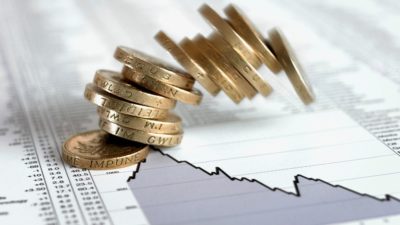With the expenses that can pile up at this time of year, the always appealing idea of a second income can seem even more attractive than usual.
Earning a second income need not necessarily mean having a second job, however.
One common way for people to earn some extra money without working for it is by investing in shares that pay dividends.
Should you invest £1,000 in M&G right now?
When investing expert Mark Rogers has a stock tip, it can pay to listen. After all, the flagship Motley Fool Share Advisor newsletter he has run for nearly a decade has provided thousands of paying members with top stock recommendations from the UK and US markets. And right now, Mark thinks there are 6 standout stocks that investors should consider buying. Want to see if M&G made the list?
Understanding the basics of dividend shares
Not all shares pay dividends. Even when one does, it can stop at any moment. For example, Card Factory announced this week that its business cost base has suffered extensively in the wake of the Budget and it plans to axe its dividend.
So, when buying income shares, I try to find ones that I reckon can maintain or raise their dividends – but I spread my choices across multiple companies, as the unexpected can always happen.
How much I earn in second income depends on the average dividend yield I earn from a share.
If I invest £1,000 in shares yielding 5%, for example, I would hopefully earn £50 annually in dividends (although as I explained above, that could end up being less – or more).
Finding shares to buy
But simply looking at yield can be a mug’s game. It is important to understand how likely a company is to be able to fund a certain level of dividend in future – and whether paying dividends is in line with the firm’s strategy.
After all, excess cash can be used in other ways, from investing for growth to building cash reserves or buying back shares.
So I look for companies with a large addressable market, competitive advantage, and the prospect of generating sizeable free cash flows with which to fund dividends.
One high-yield share I own
As an example, I would point to one share from my own portfolio: M&G (LSE: MNG).
The FTSE 100 asset manager operates in a global industry that is huge and likely to stay that way for the foreseeable future. Thanks to its well-known brand, large customer base spread across diverse markets, and deep financial markets experience, I regard M&G as having a competitive advantage.
It has proven itself able to generate sizeable free cash flows and that has supported a generous dividend that has been growing in recent years. Currently, the M&G dividend yield is a juicy 10.1%.
Can that last?
One concern I have is the risk that economic volatility and a weak growth outlook could lead to investors withdrawing funds. M&G’s customers (outside its Heritage division) took more money out than they put into its funds in the first half.
For now, though, I have no plans to sell my shares.
Building large dividend streams
That 10.1% yield is far higher than the FTSE 100 average of 3.6%.
But even achieving a more modest average yield – say 6% — I think a long-term investor could target a £10k annual second income.
Investing £180 per month and compounding at 6% annually, the portfolio should be worth over £168,000 after 29 years. At a 6% yield, that would generate over £10k annually in dividends.
An investor could start generating the second income sooner by switching from compounding to taking the dividends in cash, but the amount would be lower.








